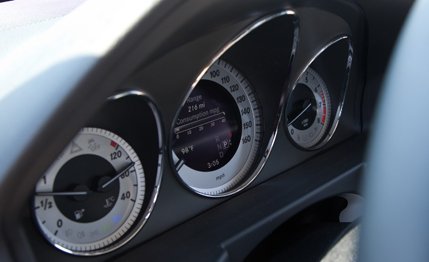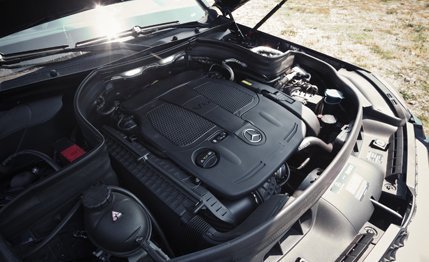
 Instrumented Test
Instrumented Test


We got our first look at the 2013 GLK makeover recently and concentrated on one equipped with a new 2.1-liter turbo-diesel option, the GLK250. But that engine won’t be available until late in the year. In the meantime, GLK prospects will be test-driving baby-Benz utes equipped with a familiar powertrain—a 3.5-liter DOHC 24-valve V-6 and seven-speed automatic transmission.
Well, mostly familiar. It’s the same oversquare 60-degree aluminum design, but the installation of direct fuel injection gives it a substantial output increase over the 2012 model’s: 302 hp (versus 268) and 273 lb-ft (versus 258). Those are useful gains, lending more urgency to forward progress.
Rear Drive versus 4WD
Just how much urgency, of course, is to some extent a function of how many wheels are putting power to the ground, i.e., the back two or all four. We took two 2013 GLKs to the test track—one with rear drive, the other equipped with 4MATIC all-wheel drive—to quantify the distinction. We must add that this wasn’t quite as scientifically clean as we’d hoped. All-wheel drive inevitably adds weight, and the GLK 4MATIC was in fact heavier than the rear-wheel-drive version.


But our rear-drive GLK was loaded with a lot more extras—$16,060 in optional equipment, $8350 more than the 4MATIC’s options array. Optional goodies generally figure into curb weights, and in this case, they all but offset the additional mass associated with sending power (as needed) to all four wheels.
So make it a measly 10 pounds in favor of the rear-driver, 4202 pounds versus 4212. Tidy totals for SUVs, but the difference isn’t really what you’d call a significant performance factor.
Academic Distinctions
Nevertheless, we did record a tiny edge in favor of the rear-drive GLK in basic acceleration—5.7 seconds to 60 mph versus 5.8—and an equally microscopic advantage at the quarter-mile mark: 14.4 seconds at 98 mph versus 14.5 at 97.
We think it’s safe to say that these distinctions are unlikely to weigh heavily in a purchase decision. More important, we think, is how those numbers stack up in the broader world of cute utes—e.g., with something like the forthcoming 310-hp turbo-five Audi Q3. Audi predicts a 0-to-62-mph run in 5.4 seconds for its chunky little hot rod, so the answer to the stacking-up question is: pretty well.


The GLK350’s fuel economy won’t reach the lofty heights of the forthcoming diesel’s, but thanks to direct injection and stop-start technology, it’s improved from the previous model. We recorded 21 mpg with the 4MATIC and 19 mpg with the rear-drive GLK, a difference we put down to logging more highway miles with the former. Much of the standard GLK’s mileage was accrued while barnstorming our favorite back roads.
Agility Index
Barnstorming is an unlikely activity for owners of rides in this class, but for those few who appreciate athletic reflexes, the GLK likely will furnish a nice surprise. Augmented by a new electric power-steering system that’s gratifyingly tactile and accurate, the GLK responds briskly to commands from the helm.